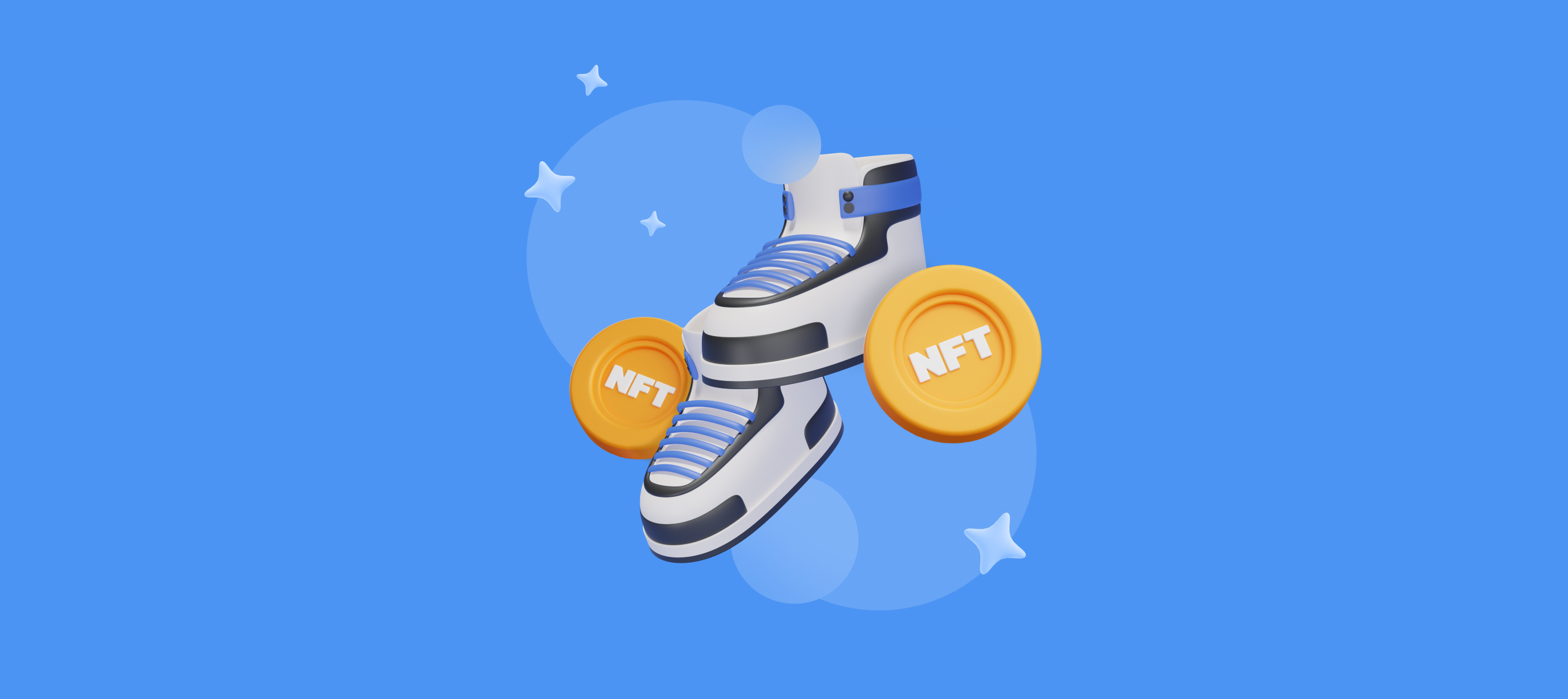M2E Projects 2022

This blog post will cover:
- How to get crypto with Move-to-Earn Apps
- Conclusion
In November 2022, Nike announced the plans to launch a Web3 platform called .Swoosh next year. The company plans to up its NFT game: the users will be able to purchase digital clothes and shoes for their avatars in Web3 games and get real-life perks for that. These exciting opportunities are in the near future, but right now, let us have a look at the sports-related crypto-projects that already exist in the market.
How to get crypto with Move-to-Earn Apps
In this article, we will discuss the Move-to-Earn (M2E) concepts, which have some similar aspects to Learn-to-Earn and Play-to-Earn products that we have covered before.
Sweat Economy
This is a fitness mobile app that rewards users for the steps they make and by doing so promotes a healthy lifestyle. Physical activity brings rewards - SWEAT tokens (for the first 5,000 steps of the day) and sweatcoins (after the first 5,000 steps). The former is the platform’s cryptocurrency built on NEAR blockchain which can be staked to earn rewards. The latter is the in-app points; users can exchange those for discounts, and gifts, or donate to charity.
In the future, Sweat Economy plans to develop together with their customers: the goals for minting coins will become more difficult, and there will be an inactivity fee. However, it seems that such challenges do not scare anyone away: as of now, Sweat Economy claims to have 120 million users.
Lympo.io
Lympo is an ecosystem that tries to incentivize people to meet their fitness goals and be more physically active in general. It is built on an Ethereum blockchain and has a utility token LYM which users get for achieving their goals. Aside from traditional usage of the coin for trading and staking, Lympo users can spend them on fitness-related products and services.
What is more, the project aims to change the way data is handled in the sphere of wellness. The developers made it possible for entrepreneurs to pay for accessing the users’ anonymized data to take an informed approach when creating products and services. People can also support the start-ups they like by crowdfunding them with the LYM tokens they earned.

Genopets
Genopets is a unique crypto project because it is a game that combines two concepts: Play-to-Earn and Move-to-Earn. Basically, players have their in-game pets that are somewhat Pokemon-like: they can grow, evolve and take part in battles. All of these actions depend on the users’ behavior in real life: the game has access to their biometric data (e.g. physical activity, sleep, heart rate). Those who take care of their bodies and minds are rewarded with KI, the in-game currency. There is also GENE token which is used for governance, staking, and in-game purchases. The game is built on the Salana blockchain.
Additionally, almost all objects in the game are NFTs owned by players that can be traded. They include refined crystals (used for the evolution of Genopets) and habitats (lands where the pets live and develop). Users also have the opportunity to choose what they are willing to do, they are not limited to taking care of the digital creature. They can also be landlords (lend out habitats) or merchants (put their efforts into customizing in-game NFTs and trading them).
Dotmoovs
Dottmoovs is an app that unites people doing sports and allows them to take part in competitions that take place in the metaverse using their phones and AI technologies. Initially, the idea was conceived during the lockdown for the users to share their fitness results and not lose the sense of community. MOOV is the system’s native token which is based on the Ethereum blockchain. People can use it in competitions with others, in various challenges, or for purchasing NFTs that look like different soccer balls.
At the moment, two kinds of activities are available: freestyle football and dance but the team is working on adding more.
Step App
Step App is not just an app with fitness rewards, the team has ambitious plans to build a whole Step metaverse where other FitFi (fitness finance) products built on Step protocol will exist. For now, the app rewards users for exercising, meeting their goals, and taking part in competitions and challenges. It uses augmented reality to immerse the players and bring in the gamified aspect and take the advantage of combining gaming and fitness industries in a metaverse.
The available types of exercise include walking, jogging, and running. The team behind Step App pays a lot of attention to the socializing aspect in hopes to create a community with shared interests.
There is a token FITFI, which is used for governance and staking, as well as in-app currency KCAL, which allows users to purchase NFTs called SNEAKs (they are necessary to use the app).
Conclusion
Despite quite a straightforward concept of Move-to-Earn, the projects that deal with it are interesting and diverse. They allow users to not only spend time doing something that is good for their health but also socializing with people who have similar interests and learning more about the way crypto works along the way.

